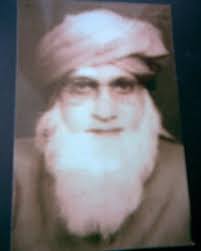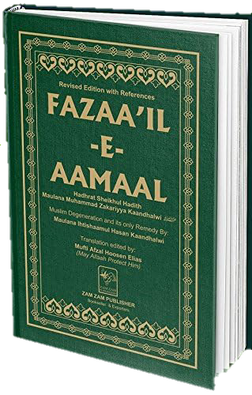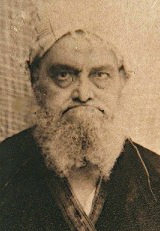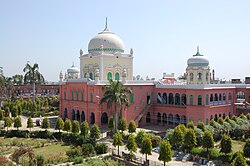
The Deobandi movement or Deobandism is a revivalist movement within Sunni Islam that adheres to the Hanafi school of law. It was formed in the late 19th century around the Darul Uloom Madrassa in Deoband, India, from which the name derives, by Muhammad Qasim Nanautavi, Rashid Ahmad Gangohi, Ashraf Ali Thanwi and Khalil Ahmad Saharanpuri after the Indian Rebellion of 1857–58. They opposed influence of non-Muslim cultures on the Muslims living in South Asia. The movement pioneered education in religious sciences through the Dars-i-Nizami associated with the Lucknow-based ulama of Firangi Mahal with the goal of preserving traditional Islamic teachings from the influx of modernist, secular ideas during British colonial rule. The Deobandi movement's Indian clerical wing, Jamiat Ulema-e-Hind, was founded in 1919 and played a major role in the Indian independence movement through its participation in the Pan-Islamist Khilafat movement and propagation of the doctrine of composite nationalism.

The Darul Uloom Deoband is an Islamic seminary in India at which the Sunni Deobandi Islamic movement began. Uttar Pradesh-based Darul Uloom is one of the most important Islamic seminaries in India and the largest in the world. It is located in Deoband, a town in Saharanpur district, Uttar Pradesh. The seminary was established by Muhammad Qasim Nanautavi, Fazlur Rahman Usmani, Sayyid Muhammad Abid and others in 1866. Mahmud Deobandi was the first teacher and Mahmud Hasan Deobandi was the first student.

Tablighi Jamaat is an international Islamic religious movement focuses on exhorting Muslims to be more religiously observant and encouraging fellow members to return to practising their religion as per the Islamic prophet Muhammad, and secondarily give dawah (calling) to non-Muslims. "One of the most widespread Sunni" islah (reform) and called "one of the most influential religious movements in 20th-century Islam," the organization is estimated to have between 12 and 80 million adherents worldwide, spread over 150 countries, with the majority living in South Asia.

Muḥammad Ilyās ibn Muḥammad Ismā‘īl Kāndhlawī Dihlawī was an Indian Islamic scholar of the Deobandi movement who founded the Tablighi Jamaat, in 1925, in Mewat province.

Fazail-e-Amaal, authored by Zakariyya Kandhlawi between 1929 and 1964, is a book that primarily consists of treatises from the Fada'il series, originally published in Urdu. Its purpose is to inspire and motivate Muslims in their religious practices by presenting a diverse range of Islamic teachings, stories, and anecdotes. The book's popularity has led to translations in multiple languages, including English and French, establishing it as a major resource for the Tablighi Jamaat, a transnational pietistic movement. Written at the request of Ilyas Kandhlawi, the founder of Tablighi Jamaat, the book was initially named Tablighi Nisab or Curriculum for Tabligh. It is the most popular ongoing publication of Urdu literature in the present era and is extensively read due to its inclusion in the literature of the Tablighi Jamaat. The book's language is appreciated for its simplicity, clarity, and accessibility to readers.
Kandhla is a town, near Shamli City and municipal board in Shamli District in the Indian state of Uttar Pradesh.

Zakariyya Kandhlawi was a mid-twentieth-century traditionalist Sunni scholar and an authority in the study of hadith, also known as Sheikh al-Hadith, hailing from India. He was an influential member and ideologist of Tablighi Jamaat and the author of the Fada'il series, which is a crucial propagation literature for the movement. Born into a family deeply rooted in Tablighi Jamaat and associated with the Deobandi movement, he studied under Mazahir Uloom and eventually became a teacher there in 1917, retiring over half a century later in 1968. Engaging with Sufism, a distinctive feature of the mainstream Indian Ulama, he was a student of Khalil Ahmad Saharanpuri in both hadith and spirituality. Together, they embarked on a ten-year journey to compile Badhl al-Majhud, an explanatory work on Sunan Abu Dawood. Initially published in five volumes, he expanded it to a twenty-volume collection. He made his first trip to Medina with Saharanpuri at a young age, and in 1972, he settled in Medina and continued his missionary work from there until his death. He was buried next to his teacher Saharanpuri at Al-Baqi Cemetery, whose successor he had been named. During his initial stay in Medina, he began working on a commentary on Muwatta Imam Malik, eventually publishing Awjaz al-Masalik over a thirty-year period. This work quickly earned him a reputation for his expertise in interpreting the Maliki tradition. The first edition, published in six volumes in India, was followed by a fifteen-volume second edition, with the first three volumes printed in Cairo and the remaining volumes in Beirut.
Haji Muhammad Abdul Wahhab (Urdu: حاجی راو محمد عبد الوہاب, Ḥājī Muḥammad ‘Abdul-Wahhāb was an Islamic preacher and the emir of Tablighi Jamaat in Pakistan.

Muḥammad In‘āmul-Ḥasan Kāndhlawī was an Indian Islamic scholar who served as the Chief leader or Amir of the Tablighi Jamaat from 1965 to 1995.

Muḥammad Manz̤oor Nomānī was an Indian Islamic scholar. Prominent among his written works are Maariful Hadith, Islam Kya Hai?, and Khomeini and the Iranian Revolution.

Zubair-ul-Ḥassanc. was an Indian Islamic scholar and fourth emir of Tablighi Jamaat in India.

Idris Kandhlawi was a Pakistani Sunni scholar during the mid-twentieth century, widely recognized for his contributions to various fields of Islamic studies, including hadith, Quranic studies, Islamic jurisprudence, Prophetic biography, and theology. Holding the titles of Sheikh al-Hadith and Sheikh al-Tafsir, he traced his lineage to Abu Bakr on his father's side and Umar on his mother's side. He studied in Thana Bhawan under Ashraf Ali Thanwi. He studied hadith, first at Mazahir Uloom under Khalil Ahmad Saharanpuri, and later at Darul Uloom Deoband under Anwar Shah Kashmiri. He started his professional career at Madrasa Aminia and later went to Darul Uloom Deoband. In 1929 he took a position in Hyderabad State, where he had access to the Asafia Library. This experience enabled him to produce a five-volume Arabic commentary on Mishkat al-Masabih titled Al-Taleeq al-Sabeeh, of which the first four volumes were published in Damascus. His scholarly work garnered recognition in the Arab world. He later assumed the roles of Sheikh al-Tafsir at Darul Uloom Deoband and Sheikh al-Hadith wa al-Tafsir at Jamia Ashrafia. In addition, he served as the Chancellor of Islamia University of Bahawalpur during its tenure as Jamia Abbasia.
Muhammad Saad Kandhlawi is an Indian Muslim scholar and preacher. He is the great-grandson of the Tablighi Jamat founder Muhammad Ilyas Kandhlawi. He heads the Nizamuddin faction of the Tablighi Jamat.

Zafar Ahmad Usmani, was a 20th Century Sunni Muslim Jurist who became an influential figure of the Hanafi school of Sunni jurisprudence's Deobandi Movement. He also was a prominent Pakistan Movement activist.

Muhammad Yunus Jaunpuri was an Indian Islamic hadith scholar who served as the senior professor of hadith at the Mazahir Uloom in Saharanpur. He was one of the senior students and disciples of Muhammad Zakariyya Kandhlawi. He taught at the Mazahir Uloom and authored books such as Al-Yawaqit al-Ghaliyah, Kitab at-Tawhid and Nawadir al-Hadith.

Awjaz al-Masalik ila Muwatta Malik is an 18-volume arabic commentary on the Muwatta Imam Malik written by Zakariyya Kandhlawi. This work presents a detailed analysis of the Muwatta, including its various narrations, sources, and discussions on the legal rulings derived from the hadith, according to the four schools of thought. It covers not only the sources of the Maliki school but also evidence from the Hanafi school, making it one of the most important works of hadith commentary in the Hanafi school of Islamic jurisprudence. Its impact on Islamic scholarship has been profound.

This bibliography of Zakariyya Kandhlawi is a selected list of scholarly resources that are generally available. These resources are related to Zakariyya Kandhlawi, a leading hadith scholar who is popularly known as Sheikh al-Hadith and served as an influential ideologue of Tablighi Jamaat during the mid-twentieth century in India. He authored numerous books on classical Islamic knowledge, including the notable work Awjaz al-Masalik. In 1970, he published a seven-volume autobiography in Urdu titled Aap Beati, in which he aimed to cover all the information related to himself and the remarkable events of his life. This list includes his biographies, theses written about him, and articles published about him in various journals, newspapers, encyclopedias, seminars, websites, and follows the APA style.

Zakariyya Kandhlawi was a traditionalist Sunni scholar and an authority in the study of hadith during mid-twentieth-century India. He was also known as Sheikh al-Hadith and was an ideologist of Tablighi Jamaat. He wrote in Arabic and Urdu, and did not copyright his publications. He began writing at the age of 20 while a student. After completing his studies, he became a teacher at Mazahir Uloom in 1917. During this period he collaborated with Khalil Ahmad Saharanpuri on Badhl al-Majhud, which was the foundation of his lifelong study of Hadith. He wrote 103 works, 57 in Arabic and 46 in Urdu. His Fada'il series has been translated into multiple languages and served as resources for the Tablighi Jamaat.

Hayat al-Sahaba is a book originally written in Arabic by Yusuf Kandhlawi. It was completed around 1959 and later expanded into four volumes with additional annotations and introductions by Abul Hasan Ali Hasani Nadwi and Abd al-Fattah Abu Ghudda. The book was first published for Tablighi Jamaat. It is based on sources such as Hadith, history, and biographies, with a specific focus on the life of Muhammad and his companions. The book is in nineteen chapters, each addressing specific topics related to the companions.
Muhammad Umar Pālanpūrī was an Indian Islamic scholar and preacher associated with the Tablighi Jamaat.













